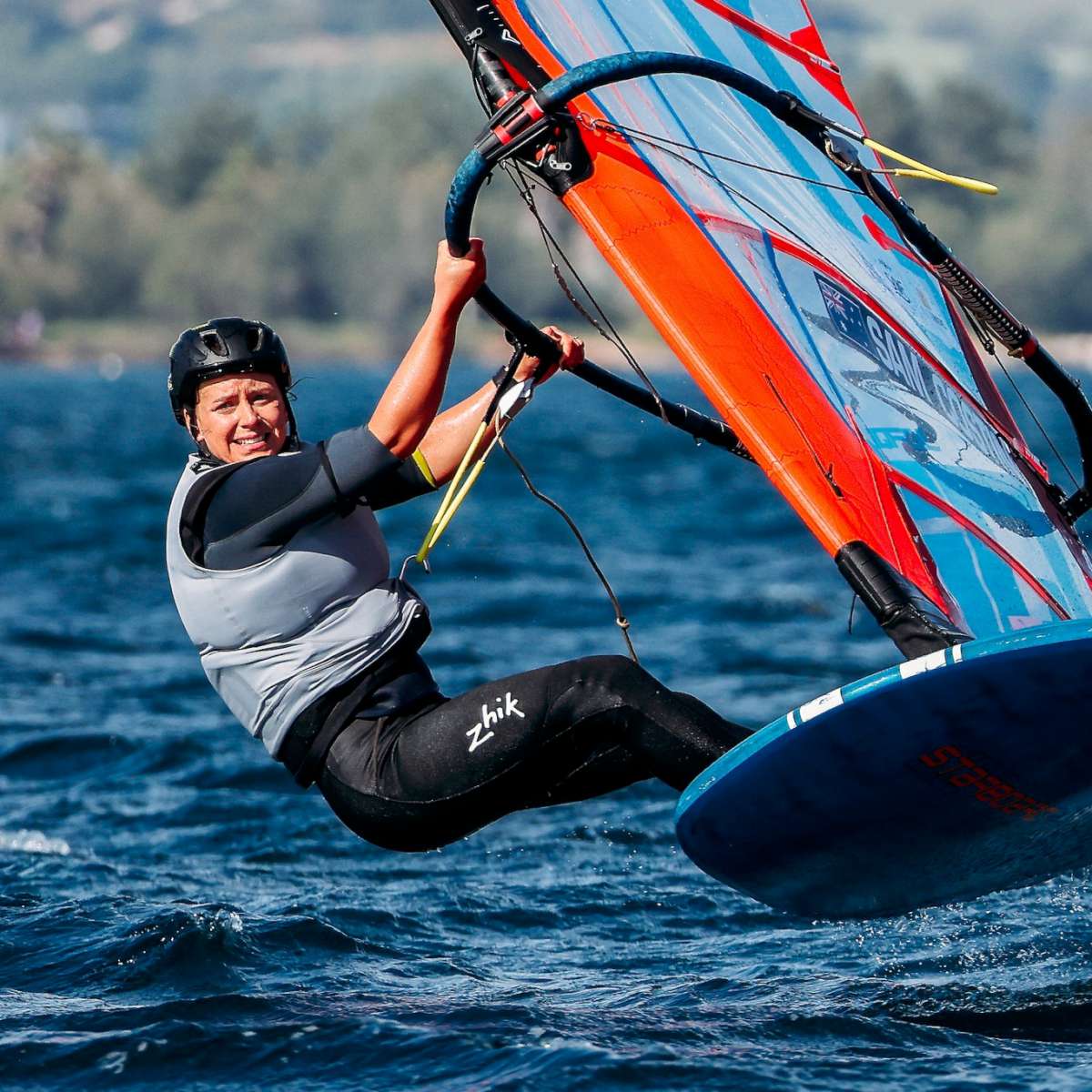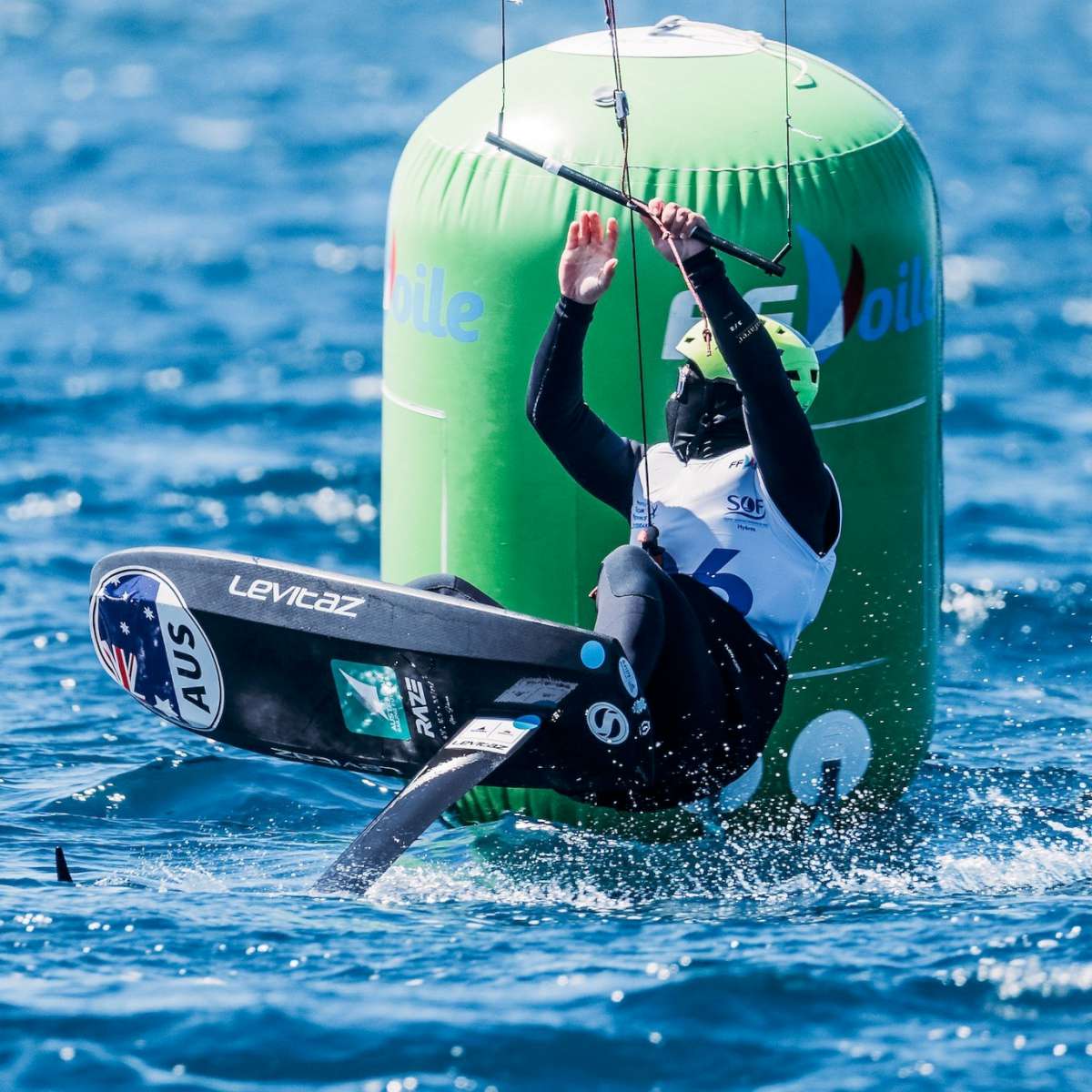Every Olympic cycle is unique, bringing its own unique obstacles. Who has adapted to the challenges most effectively? That only becomes clear as four-years of hard work and dedication explode in a flurry before our eyes over less than two weeks! That’s what makes the Olympics so special – it takes rare athletes to come through gruelling campaigns and burst onto the grandest stage at their best and ready to climb their sailing Everest.
But this cycle has been unique, and the teams have had to adapt on more fronts, and quicker than ever. The obvious reason for this has been an historic 3-year cycle. Whether that’s meant bouncing back from disappointment in Tokyo, maintaining momentum, or starting out for the first time with 12-months less preparation under their belts.
New Equipment
The new challenges haven’t stopped there. Modifications in Nacra 17 foil designs and new rigs and sails in the 49er & 49erFX classes both promise increased performance and exciting racing. But they also present a challenge for previous fleet leaders to adapt and maintain their dominance, while giving an opportunity for new medal hopefuls to take advantage if they can reach optimal performance more quickly.

New Classes
Then there is the introduction of two new foiling classes for Paris 2024. iQFOiL and Formula Kite add an exciting dimension and promise to bring new eyes to Olympic sailing. But, presenting significantly different technical demands, and stretching the capabilities and resources of the teams, they will certainly have given Olympic federations challenges in adapting their programmes to new opportunities on the medal table.
A New Look Olympics?
The inclusion of new foiling classes adds an exciting dimension to the Olympics, bringing a sense of innovation and increased appeal to the sport. Efforts to modernise Olympic sailing are palpable, even in details like the sleek black finish of the new 49er/49erFX gear. Foiling is on the rise (no pun intended), and it’s here to stay. The last Games saw the Nacra transition into full foiling for the first time, and with further evolution to the foils this time around, alongside its fellow foiling classes, it fits perfectly into the current landscape of sailing – which is synonymous with innovation at the leading edge.

Olympic sailing becomes more professional with every cycle. While it remains truer to its amateur roots and strict class rules than the sport’s other grand stages like the Vendee Globe and America’s Cup, it is modernising rapidly.
The Role of Data Technology
And it’s not all about the hardware. Another area where the technological gap is closing is in the increased use of data technologies. Lots of data sets are being utilised, but wireless load data stands out–especially when it comes to getting the most out of new equipment quickly.
Once reserved for America’s Cup teams, load sensors have made their way into every area of sailing (and at every level). Cyclops is proud to have played a central role, taking innovations like smartlink (originally developed in collaboration with America’s Cup team INEOS Team UK) and shrinking it down to Nano-size and creating smarttunemodels for thread sizes down to ¼”:


With all sensors compatible with common wireless displays like Vakaros Atlas2 & Sailmon MAX, the data has become easy-to-use and accessible to most.


Unlike in the America’s Cup – where most of the teams will be using load sensors in development, training, and racing itself – in the Olympics, they are not permitted in racing. However, in the first Olympic cycle since becoming available at this size, the technology has proven revolutionary for training and tuning. With less time to adapt to radical changes, wireless load sensors have provided the key to accelerating the process. For instance, installing load sensors on the old rig of the 49er and comparing the data to the new one instantly reveals how changes to the setup manifest in real terms.

“With the new rig configuration it is vital to use the latest technology to get up to speed, having your live load settings on screen is a game-changer”
- Dylan Fletcher-Scott, Men’s 49er Olympic Champion
Equally, by testing the new Nacra foils while using the sensors, sailors have been able to locate their new top gear, and match that fast mode to an exact, repeatable number – either marking up their sheets to find it again while racing, or relying on muscle memory.
As well as live data, logged data for post-sail analysis has also become more accessible and easy to use. Users simply access the free Cyclops app, or third party apps like Sailmon or Vakaros. Data is also easy to export to a range of software programmes which integrate boat and wind speed and other inputs to narrow down on optimal settings for all conditions.
The GBR, GER, NOR, SWE, AUS, AUT, FRA, ITA, USA, ESP, NED, SUI, JAP & CAN Olympic Federations all use Cyclops to support their athletes – helping them get up to speed with equipment changes, conduct more effective two-boat testing, and push everyone to improve through comparative data. Coaches like Alain Sign have lauded the ability to shortcut the learning process by using load sensors on the forestay and clew:
It’s the work that goes on behind the scenes long before the starting gun sounds that so often decides the results, and leading sailors across classes are using the technology to get an accelerated edge. Stand-out Cyclops sailors also include the likes of Tokyo Gold Medalists Ruggero Tita & Caterina Banti (Nacra 17), Silver Medalists John Gimson & Anna Burnet (Nacra 17), 49er FX European Champions, Helene Naess & Marie Ronningen, World Sailing Hempel World Cup Gold Medalist 2022 Sarah Douglas (ILCA), and former World Champion & 5X German Champion Jannis Maus (Formula Kite). In the Formula Kite, competitors have quickly innovated to utilise a smart𝗹𝗶𝗻𝗸 Nano in their main lines – closely observing their loads to help them learn optimal body position for maximum speed.
“The load cells enabled us to actually visualise the interconnection between load into our harness and speed. Even though load is just one variable next to board-heel, foil and kite-trim, it marks an essential part in quantifying potential gains on the race track.”
- Jannis Maus
As the Olympics draws near, Cyclops would like to wish all of its customers the best of luck. We’re proud to have played a part in so many inspiring campaigns.
Want to sail like an Olympian? Or eyeing LA 2028? Find the sensor for your boat or get in touch with a Cyclops expert for a consultation.
####
About Cyclops Marine
Cyclops Marine Ltd, is a technology business led by innovators that have developed load sensors for use in the sailing environment. The Cyclops Marine Smart range of products are a new generation of wireless load sensors created by some of the leading brains from Cambridge University, in collaboration with sailors, to produce accurate, repeatable and meaningful data. Set to become the industry standard, the Smart range, enables sailors to set their boat up for optimum performance time after time. Easy to install, the range provides real-time data that is simple to understand. Cyclops is led by Ian ‘Chips’ Howarth surrounded by an experienced team of renowned sailors & technical experts. The Smart range is sold through a global distribution network.
For product and distribution enquiries:
Ian Howarth, Cyclops Marine Limited
Ian.howarth@cyclopsmarine.com
An extensive range of Cyclops devices and accessories is now available from Arcus Wire Group here in Australia. For further information and trade enquiries, please reach out to the Arcus Wire Group team on 1800 272 879, email sales@arcuswire.com or via www.arcuswire.com
@Cyclopsmarine
@arcuswiregroup
























